Going Dutch: How Canada can find more creative ways to celebrate our veterans
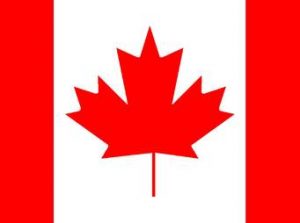 Article in The Globe and Mail 7/11/2020
Article in The Globe and Mail 7/11/2020
Karen Hunter is founder of the not-for-profits In Our Fathers’ Footsteps and The Canadian Remembrance Torch. She is the daughter of a Second World War veteran.
When it comes to honouring Canada’s Second World War veterans and war dead, the Dutch set the gold standard. Canada would do well to claim bronze. Not that remembrance is a competition, but like the Olympics, mastery reflects national pride, focused effort and unwavering commitment to keep the flame burning.
In the Netherlands, every day is a remembrance day. Spring, summer, fall, winter. Not a day goes by without a veteran commemoration. Take the Sunset March across the Oversteek bridge in Nijmegen, for example. Every evening, a slow, silent march is led by the “Veteran of the Day.” Overhead lights illuminate one by one as the veteran passes, each light representing an Allied soldier killed there during Operation Market Garden.
4 Mei 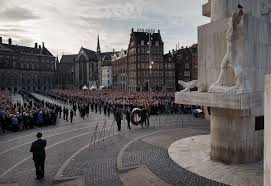 On May 4, on Remembrance of the Dead, the Dutch honour all who perished in the Second World War, including more than 7,600 Canadian soldiers of the 175,000 who served in the nine-month campaign to liberate the Netherlands. Soon after the war, Dutch families “adopted” these Canadian soldiers’ graves and have maintained them – from one generation to the next – for more than seven decades. On Remembrance of the Dead, school children place tulips at each headstone and bulbs – by the thousands – are gifted to Canada by the Dutch royal family in gratitude for providing them refuge here.
On May 4, on Remembrance of the Dead, the Dutch honour all who perished in the Second World War, including more than 7,600 Canadian soldiers of the 175,000 who served in the nine-month campaign to liberate the Netherlands. Soon after the war, Dutch families “adopted” these Canadian soldiers’ graves and have maintained them – from one generation to the next – for more than seven decades. On Remembrance of the Dead, school children place tulips at each headstone and bulbs – by the thousands – are gifted to Canada by the Dutch royal family in gratitude for providing them refuge here.
This year, the Netherlands’ numerous veteran commemorations have been forced to pause or scale back owing to coronavirus precautions, but there’s 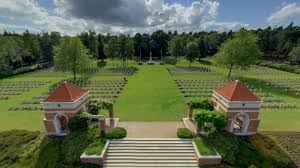 still a lot Canadians can learn from the traditional cycle of Dutch commemorative events. For example, in normal times, you’ll need a reservation to attend the May 4 ceremony at Holten Canadian War Cemetery, since capacity is limited to 5,000. The cemetery’s visitor centre and museum is home to a massive database of Canadian soldiers’ photos and personal stories. Similar databases can be found at Bergen op Zoom and at Groesbeek Cemetery, where an initiative is under way to create a plaque for each of its 2,617 headstones, etched with the Canadian soldier’s photo.
still a lot Canadians can learn from the traditional cycle of Dutch commemorative events. For example, in normal times, you’ll need a reservation to attend the May 4 ceremony at Holten Canadian War Cemetery, since capacity is limited to 5,000. The cemetery’s visitor centre and museum is home to a massive database of Canadian soldiers’ photos and personal stories. Similar databases can be found at Bergen op Zoom and at Groesbeek Cemetery, where an initiative is under way to create a plaque for each of its 2,617 headstones, etched with the Canadian soldier’s photo.
Traditionally, at midnight – the beginning of May 5 – Dutch remembrance transforms from solemn reflection to festive commemoration. A torch is lit in Wageningen and a team of 1,300 runners carry the flame, in relay, to 200 Dutch communities. And so begins Liberation Day, a joyous celebration of freedom including music festivals, military parades, re-enactments, guided tours, street theatre and festival markets.
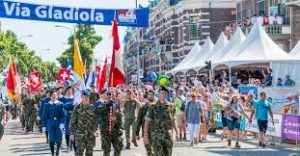 Veteran remembrance in the summer? Absolutely! The Four Days Marches in Nijmegen, for example, is a gruelling walk of upward of 200 kilometres that honours veterans and includes a stop at Groesbeek Cemetery to pay tribute to the Canadian soldiers buried there. In normal times, participants count themselves lucky if they are among the maximum 48,000 participants chosen by lottery to walk in the annual trek. Thousands are turned away. Plans are under way to relaunch this event next summer.
Veteran remembrance in the summer? Absolutely! The Four Days Marches in Nijmegen, for example, is a gruelling walk of upward of 200 kilometres that honours veterans and includes a stop at Groesbeek Cemetery to pay tribute to the Canadian soldiers buried there. In normal times, participants count themselves lucky if they are among the maximum 48,000 participants chosen by lottery to walk in the annual trek. Thousands are turned away. Plans are under way to relaunch this event next summer.
Fall in the Netherlands is a time to commemorate the Battle of the Scheldt and Operation Market Garden. In September, the Light Route in Eindhoven honours, by lights placed in residents’ windows, the Liberation forces who were welcomed there in 1944. Since then, lights in every shape and size transform the city annually in remembrance.
Even on Christmas Eve, the Dutch remember our soldiers. In solemn twilight, schoolchildren place glowing candles at every Canadian soldier’s grave.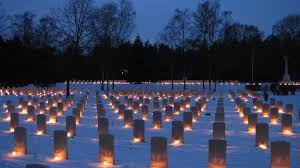 Like their parents, these children attribute their freedom and peace to the Allied sacrifice and know the importance of keeping remembrance alive. Across the country, 110 communities participate in this heartfelt tradition.
Like their parents, these children attribute their freedom and peace to the Allied sacrifice and know the importance of keeping remembrance alive. Across the country, 110 communities participate in this heartfelt tradition.
The Dutch have never forgotten that more than 80 per cent of their country was liberated by Canadian troops. Beginning with the 40th anniversary of the Dutch liberation in 1985, and every five years thereafter, Canadian veterans have been welcomed to stay in Dutch homes to attend spectacular celebrations. Treated like royalty, our veterans came to realize that what they had done was extraordinary and they were worthy of such praise. Thanks to these events, many of them opened up about their war experiences for the first time.
Despite the passage of three-quarters of a century, daily mindfulness, sincere gratitude and dedicated appreciation of freedom permeate the Dutch culture. Using creativity, ingenuity and sheer determination to never forget, the Dutch counterbalance of solemn commemoration and festive celebration keeps the spirit of remembrance alive while providing opportunities for adults to model remembrance for their children.
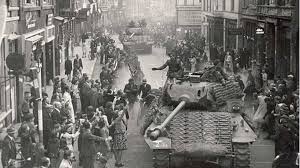 Yes, the Dutch lived for five years with war on their doorstep; they have reason to feel as they do. But, lest we forget, our soldiers were there, too – in the thick of it. What’s more, their legacy of peace, freedom and friendship is as relevant today as it is tomorrow.
Yes, the Dutch lived for five years with war on their doorstep; they have reason to feel as they do. But, lest we forget, our soldiers were there, too – in the thick of it. What’s more, their legacy of peace, freedom and friendship is as relevant today as it is tomorrow.
Remembrance in Canada needs to be redefined and re-energized; it needs to be as much about the future as it is about the past. It needs to be more frequent, more engaging, more joyful. More creative, more participative, more inclusive. And, most important, more celebratory.
As we enter a new era of remembrance marked by the passing of our Second World War veterans, it’s time for Canada to follow the Dutch example – and go for gold.


